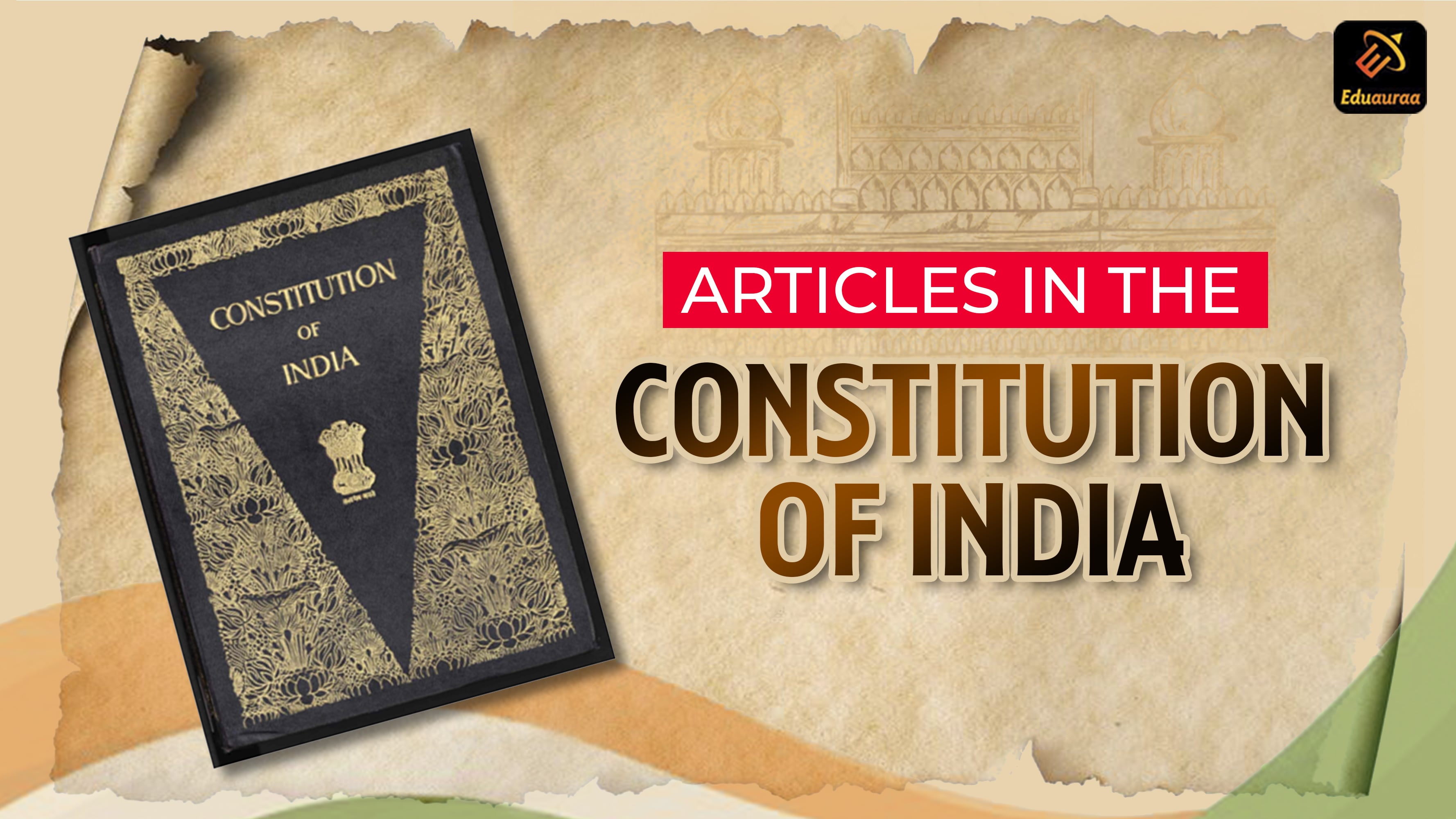Recent Posts
Subscribe
Sign up to get update about us. Don't be hasitate your email is safe.

 Article
Article
Articles of the Indian Constitution must be known to the UPSC Exam aspirants. There are 448 articles in the Indian Constitution (originally 395 articles were there). Each set of articles covers important parts of the Constitution including, Legislatures, Executive, Schedules, Parts of Indian Constitution, Constitutional Bodies, Statutory Bodies, Fundamental Rights, and more.
This article will provide you with the list of those articles in Indian Constitution that are important for the Indian Polity
There are 448 articles in 25 parts, 12 schedules, 5 appendices with more than 100 amendments in the Indian Constitution. Not every article of the Indian Constitution is a must to know for everyone Hence, all those articles in the Indian Constitution that are important from the IAS exam perspective are given below:
There are 25 parts of the Indian Constitution. They are mentioned in the table below:
|
Parts of the Indian Constitution |
Subject Mentioned in the Part | Articles in Indian Constitution |
| Part I | Union & Its Territory | Article 1-4 |
| Part II | Citizenship | Article 5-11 |
| Part III | Fundamental Rights | Article 12-35 |
| Part IV | Directive Principles | Article 36-51 |
| Part IV A | Fundamental Duties | Article 51A |
| Part V | The Union | Article 52-151 |
| Part VI | The States | Article 152-237 |
| Part VII | Note: 7th Amendment Act, 1956 repealed Part 7 | – |
| Part VIII | The Union Territories | Article 239-242 |
| Part IX | The Panchayats | Article 243-243O |
| Part IX A | The Municipalities | Article 243P-243ZG |
| Part IX B | Co-operative Societies | Article 243ZH-243ZT |
| Part X | Scheduled and Tribal Areas | Article 244-244A |
| Part XI | Relation between Union & States | Article 245-263 |
| Part XII | Finance, Property, Contracts and Suits | Article 264-300A |
| Part XIII | Trade, Commerce and Intercourse within the territory of India | Article 301-307 |
| Part XIV | Services under the Union and States | Article 308-323 |
| Part XIV A | Tribunals | Article 323A-323B |
| Part XV | Elections | Article 324-329A |
| Part XVI | Special Provisions relating to certain classes | Article 330-342 |
| Part XVII | Official Languages | Article 343-351 |
| Part XVIII | Emergency Provisions | Article 352-360 |
| Part XIX | Miscellaneous | Article 361-367 |
| Part XX | Amendment of the Constitution | Article 368 |
| Part XXI | Temporary, Transitional and Special Provisions | Article 369-392 |
| Part XXII | Short title, Commencement, Authoritative Text in Hindi and Repeals |
![]() Initially, the Constitution of India provided 7 basic fundamental rights, now there are only 6. The Right to property U/A 31 was removed from the list of fundamental rights by 44th amendment act 1978.. A legal right U/A 300–A was made and included in Part XII of the constitution.
Initially, the Constitution of India provided 7 basic fundamental rights, now there are only 6. The Right to property U/A 31 was removed from the list of fundamental rights by 44th amendment act 1978.. A legal right U/A 300–A was made and included in Part XII of the constitution.
![]()
![]()
a – Freedom of speech and expression.
b – Freedom to assemble peaceably and without arms.
c – Freedom to form associations or unions.
d – Freedom to move freely throughout the territory of India.
e – Freedom to reside and settle in any part of the territory of India.
f – Omitted
g – Freedom to practice any profession, or to carry on any occupation, trade or business.
![]()
![]()
Cultural and Educational Rights: Article 29 and Article 30
Right to Constitutional Remedies: Article 32
Remember significant articles in Indian Constitution through Mnemonics-
This is an age-old trick used to memorize a lot of content. Make a string of words or a sentence using key letters from the articles. This way you will be able to recall them faster and with minimum effort. Make your own mnemonics in order to be able to memorize vast quantities of data. For e.g. :
| U Can Fix Deposit From United States Using Pre Mature Special Rate. |
U – Union
C – Citizenship
F – Fundamental rights
D – Directive Principles
F – Fundamental Duties
U – Union
S – States
U – Union Territories
P – Panchayat
M – Municipality
S – Scheduled
R– Relation between Union and State
| Polly Has Certified ManneQuins |
P– Prohibition
H-Habeas Corpus
C– Certiorari
Man– Mandamus
Qu– Quo Warranto
If we look at the previous year’s UPSC question papers, we can come across at least one question related to the Constitution of India. Hence, knowing the importance of the Constitution of India in the IAS exam is essential. This article will mention the must-know articles of our Indian Constitution.
The conclusion of an article is the final paragraph that summarizes the main points and argument of the article. It should leave the reader with a clear understanding of the article's central idea and how it relates to them.
Purpose
What to include